Many remarkable things were invented from 1800-1900, and this included the steam engine which was first developed in the U.K. and used to pump underground water to deepen the coal mines and to consequently increase productivity. The steamboat and the steam locomotive revolutionized transportation. This period (1800-1900), on account of the extraordinary and big changes in mining, agriculture, transportation, and in almost all spheres of life is historically remembered as the ‘Industrial Revolution.’ The changed system of production, communication, and the division of labor originating from the U.K. prompted worldwide socioeconomic changes. It is interesting to note that the idea of the steam engine was not encouraged at home the U.K. while America accepted and applied it readily to its benefit and prosperity.
1. Henry Bell: Steamboat
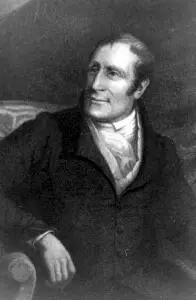
Henry Bell was born the fifth son to Patrick Bell and Margaret in Torphichen near Bathgate, West Lothian on April 7, 1767 and died in Helensburgh on March 14, 1830. His early education was completed at the local Parish School followed by his first apprenticeship to a stone mason in 1780 and the second to his uncle, a millwright. He is best known for the introduction of the first steamboat service in Europe. He built his 30-ton steamboat in 1812 and named it Comet after a big comet seen in 1811-1812. He tried his best to attract the attention of the British authorities towards his invention but to no avail except that Lord Nelson urged the House of Lords to encourage Bell. Commenting on the reaction at home, Bell wrote, ‘The Americans were the first who put my plan into practice and were quickly followed by other nations.’
2. Samuel Finley Breese Morse: Morse Code

Samuel Finley Breese Morse was born to Jedidiah Morse and Elizabeth Ann Finley Breese in Charlestown, Massachusetts, U.S. on April 27, 1791 and died at 5 West 22nd Street, New York City, New York on April 2, 1872 at the age of 80. He received his early education from Phillips Academy, Andover and graduated from Yale College. Morse invented a telegraph machine with the assistance Leonard Gale and Alfred Gale. The telegraph machine utilized Morse code based on dot and dash symbols to represent the alphabet. For example, ‘E’ is represented by a dot, ‘T’ by a dash, ‘A’ by dot dash, and similarly the letters and numbers by specific dot/dash symbols. Congress funded the building of the telegraph line between Washington, D.C. and Baltimore in 1843. The first long-distance telegraph sent from Washington to Baltimore by Morse on May 24, 1844, read, ‘What hath God wrought?’
3. Sir Humphry Davy: Electric Arc
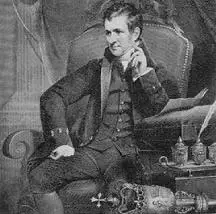
Humphry Davy was born in Penzance, Cornwall, England on December 17, 1829 and died in Geneva, Switzerland on May 29, 1829. He invented the first electric light by connecting wires from a battery to two carbon rods held apart. An arch of intense light was produced which is called an electric arc. He is known for the discovery of the elements: sodium, potassium, calcium, magnesium, barium, and boron. He also invented the Davy safety lamp and the process of splitting electrolytes, known as electrolysis. A crater on the Moon is named ‘Davy’ after him. Many streets and buildings are named after him in the world. Richard Gendel wrote a song, each verse of which recalls one of Davy’s discoveries. It was recorded in 1980 by the Cornish folk singer Brenda Wooten.
4. Richard Trevithick: Steam Locomotive
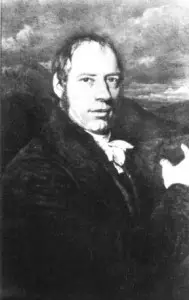
Richard Trevithick was born to Richard Trevithick and Ann Teague in Tregajorran, Cornwall, England and died in Dartford, Kent, England on April 22, 1833. The locomotive hauled a train comprising 5 wagons with 70 passengers and 10 tons of iron. It traversed 9 miles (14 kilometers). It was found to be too heavy and incompatible with the comparatively lighter and weaker cast iron rails. After three historical trips, it was abandoned. It paved the way for future developments in faster transportation. Railway lines are perhaps the best remains of the British colonial rule in many countries of the world.
5. Wright Brothers: Airplane
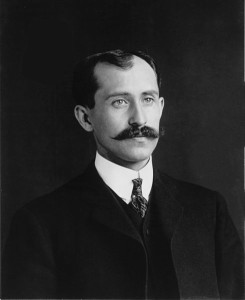
Wilbur Wright (April 16, 1867- December 1, 1912) and Orville Wright (August 19, 1871- January 30, 1948), collectively known as the Wright brothers, invented the first airplane which they called the Wright Flyer. It was made of a wooden frame covered with fabric and contained two propellers supplied with power from a 12-horse power water-cooled engine. The historical first flight was made on December 17, 1903, and the flying lasted for 12 seconds. The flyer covered 120 feet at Kitty Hawk, North Carolina, U.S.
6. John Venn: Venn diagram

John Venn was born to Martha Sykes and Rev. Henry Venn in Kingston upon Hull, Yorkshire, England and died in Cambridge, England on April 4, 1923 at the age of 88. He received his early education from Highgate School and graduated from Gonville and Caius College, Cambridge in 1853. He invented the famous Venn Diagram, and in 1881 introduced it through his work ‘Symbolic Logic.’ The Venn diagram helps to organize one’s thoughts by a graphical representation of differences and similarities between two entities and shows sets, their intersections, and unions. The Venn Building in the University of Hull was constructed to honor him.
7. Elias Howe: Sewing Machine

Elias Howe was born to Elias Howe, Sr. and Polly Howe in Spencer, Massachusetts on July 9, 1819, and died in Brooklyn, New York on October 3, 1867 at the age of 48. He invented an improved sewing machine utilizing the lockstitch loop method,devised by him. This machine involved the use of two threads, one through the needle and the other through a shuttle. Elias Howe’s sewing machine was patented in September, 1867 with the issuance of patent # 4,750. For his revolutionary invention he was awarded a Gold Medal in the Paris Exposition of 1867 and was honored with Legion d’honneur (France).
8. Cyrus Hall McCormick: International Harvester
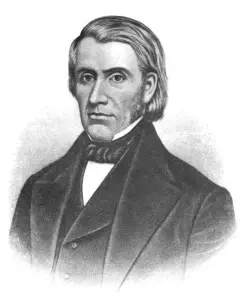
Cyrus Hall McCormick was born in Rockbridge County, Virginia on February 15, 1809 and died at the age of 75 in Chicago on May 13, 1884. He is best known for his invention of the International Harvester. His mechanical reaper could perform multiple harvesting steps, and this increased the productivity. It caused a major reduction in the required labor changing the shift of rural labor to urban areas at a global level. He earned many awards for his harvester, and the French Academy of Science elected him as a corresponding member for ‘having done more for the cause of agriculture than any other living man.’
9. Louis Pasteur: Pasteurization
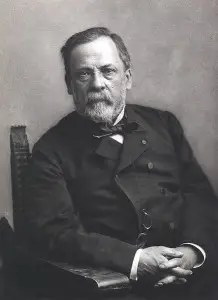
Louis Pasture was born in Dole, Jura, France Comte, France on December 27, 1822 and died in Marnes-la-Coquette, Hauts-de-Seine, France. A learned scholar as he was, he attended many academic institutions like Dijon Lycee, University of Strasbourg, University Lillie Nord de France, and Ecole Normale Superieure. He is best known for inventing a heating process to kill disease causing bacteria in milk and wine. The process, known as ‘pasteurization’ after him, is applied even today to keep food safe. He is one of the three great founders of microbiology along with Robert Koch and Ferdinand Cohn.
10. Robert Hutchings Goddard: Rockets
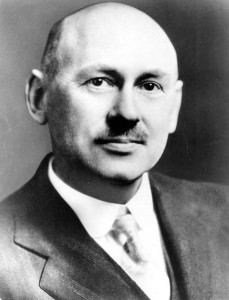
Robert Hutchings Goddard was born to Fannie Louise Hoyt and Nahum Danford Goddard in Worcester, Massachusetts on October 5, 1882 and died in Baltimore, Maryland on
August 10, 1945 at the age of 62. He is known as the father of modern rocketry. He received two American patents; one for liquid-fueled rockets and the other for solid-fueled, three-stage rockets. He launched his first ten-foot, liquid-fueled rocket Nell from a relative’s farm in Auburn, Massachusetts. The rocket went 41 ft. high, covering a distance of 184 ft. within 2 and one-half seconds. Robert Hutchings Goddard was a prolific rockets inventor and received 214 patents. A NASA facility in Maryland is named the Goddard Space Flight Center after him, and a crater on the Moon is named ‘Goddard’ in his honor. Goddard appeared on a U.S. commemorative postal stamp. He earned many other awards too.
Conclusion:
Inventions, particularly during the Industrial Revolution, have served humanity beyond people’s expectations like pasteurization, Morse code, steamboat, and the steam locomotive. A few of them, on account of the extraordinary increase in productivity, have caused constrained urbanization. A few of them, like rockets, invented for superior purposes, though, have done more harm than good to humanity. Instead of flying from Earth to higher altitudes, they are being dropped from higher altitudes to the ‘enemy locations’ on Earth with devastating effects. Any invention anywhere in the world ought to be controlled exclusively for the benefit of humanity and not the other way around. This is a great reality at the moment. Inventions are being ceaselessly used more for destruction than construction. It is a point to ponder upon.










Leave a Reply